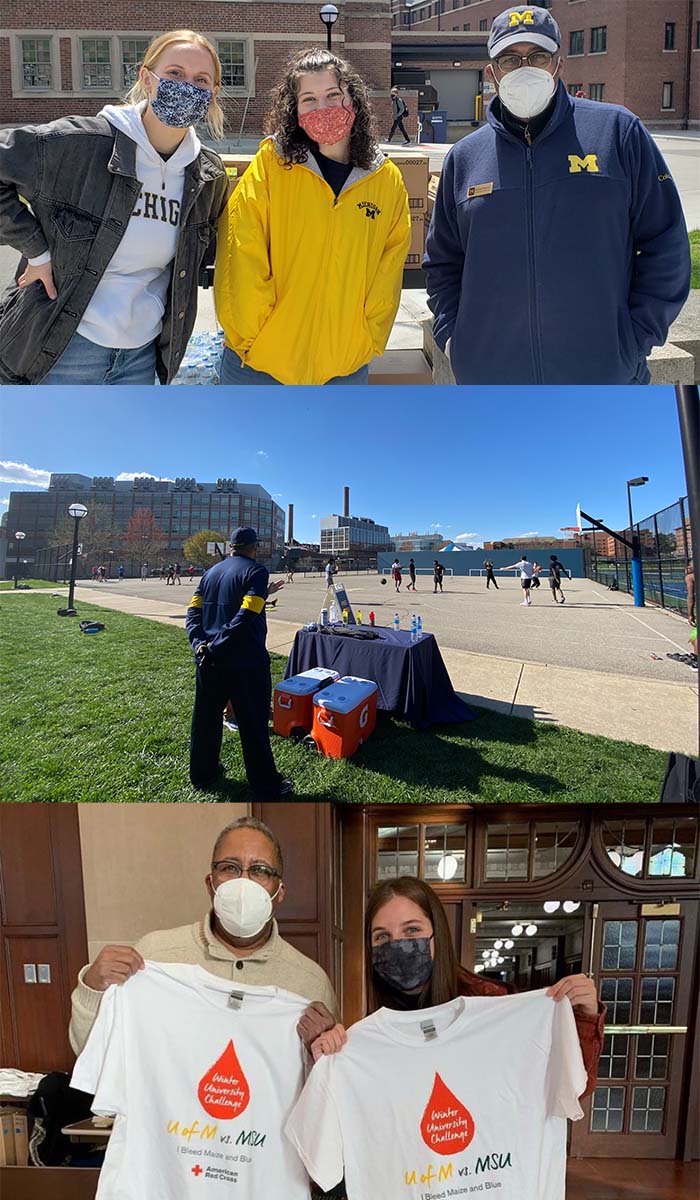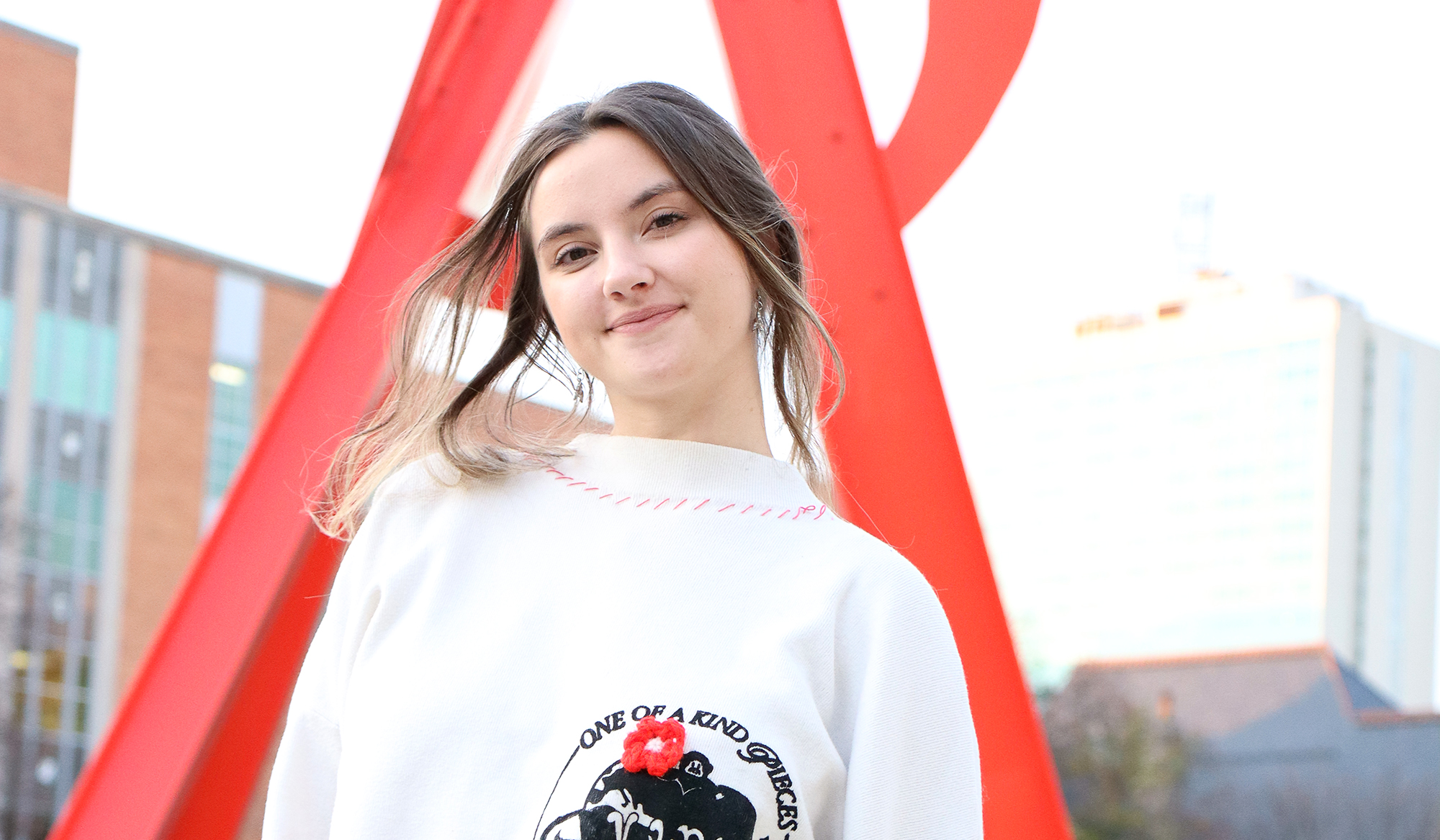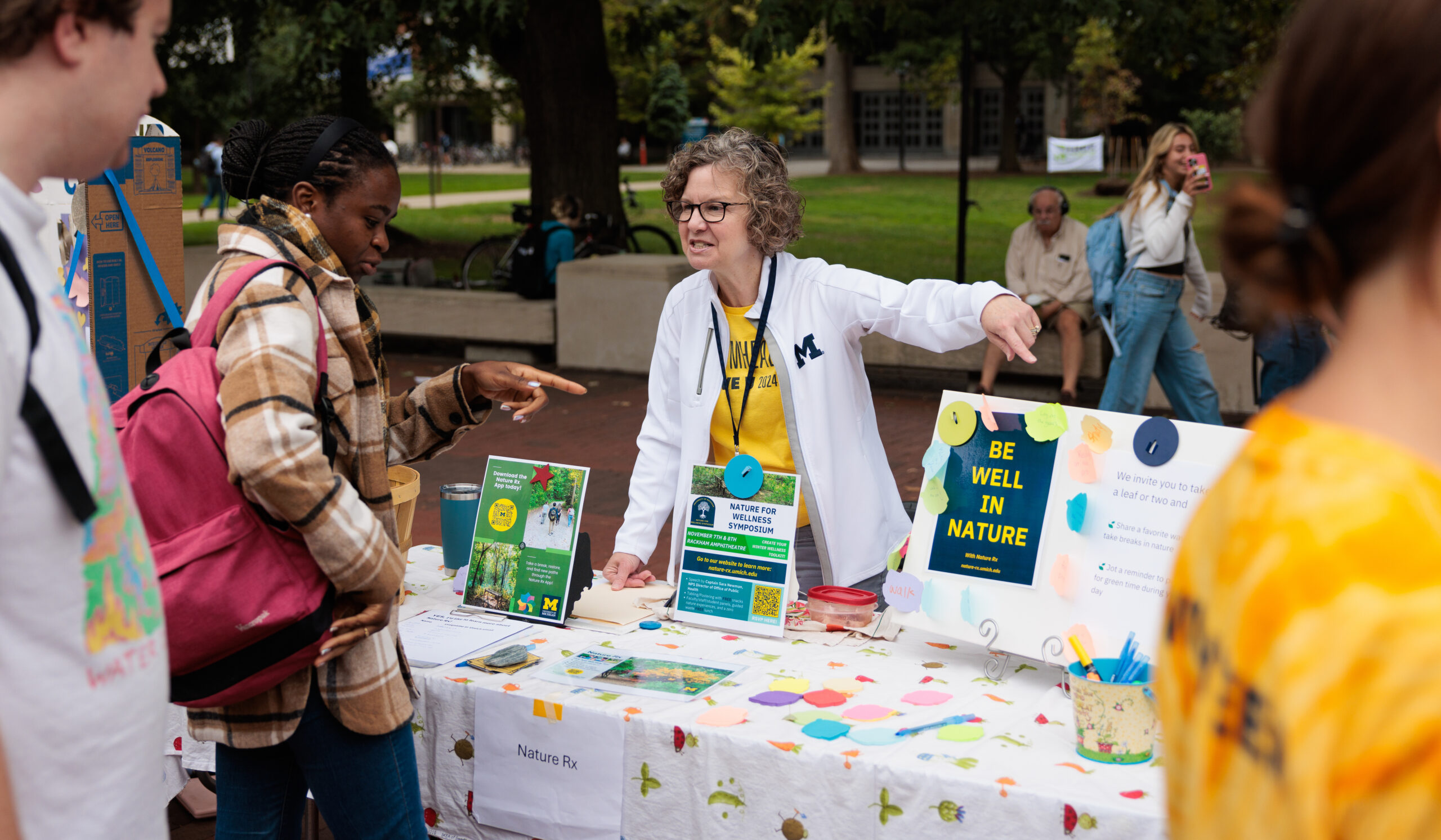Centered on Students
•
Photo by Scott Soderberg/Michigan Photography
Starting a new job is always nerve-wracking. Especially when it’s at one of the most highly ranked universities in the country. And when your predecessor is retiring after a storied 20 years on the job. And when a pandemic has just altered the landscape of higher education.
But when Martino Harmon left Iowa State University to assume the job of vice president for student life at U-M on July 1, 2020, he managed to hit the ground running. While he acknowledged that much of the job during his first year involved “constantly dealing with the crisis of the moment,” he looks forward to his second year on campus.
In a discussion with Michigan Alum, Harmon reflects on a historic year as he plans for the future.
The following has been edited for length and clarity.
On behalf of the Alumni Association, welcome to Michigan! You assumed your position during a very unusual time—more than three months after the University canceled most in-person classes. What are some of the unique challenges you heard from students during this past year?
The big thing was the lack of engagement with others, that feeling of not being connected and feeling isolated.
First-year students didn’t have a good end of their high school career and then didn’t have a normal summer orientation, didn’t have a normal welcome week. So nothing was normal even before school started. And then their classes were largely virtual, and they weren’t able to make connections with students in class and burned out from looking at a screen.
They also told us that they were very concerned about health and well-being, not just their own; they didn’t want to make others sick, whether it was family members or faculty members or other people. We saw great need for counseling services and mental health services.
In a way, your first year at U-M paralleled that of last fall’s first-year students—a lack of in-person connection.
Yes, I can understand coming to an institution and not being able to really learn the culture or history, to form relationships in a normal way—not on a screen—and to get the vibe of campus. When President Schlissel offered me the position, I think things were finalized in late February 2020. And we talked about me coming back for the March board meeting and having a reception and meeting people and shaking hands. None of that happened.
So when students talked about experiences of isolation and being disconnected, I can resonate with that. It’s lonely when you’re not working in an office with other people; I’m a people person.
The Student Mental Health Innovative Approaches Review Committee went out to different groups of faculty, staff, and students; got their input; and, this summer, developed recommendations that we’re going to start implementing this fall and winter semester.
When I came here, I felt we needed more of a change in our approach to student health and wellness. Much like when I started at Iowa State, the focus was only on CAPS—Counseling and Psychological Services. We have to recognize that a counseling center-only approach is not going to work. You’ll never have enough counselors. It’s impossible because students are not shy about seeking counseling. They’re in counseling, some of them, before they even get here.
So we’re changing that approach. Working with the provost, we convened a committee of experts in this area to work together to come up with an institutional approach, a game changer where we’re going to address mental health along a continuum. How do we work more on prevention? How do we work on faculty and staff knowing how to address mental health issues before they get to the point of counseling? How do we do check-ins with students? How do we use technology better to address mental health? How do we provide more access to CAPS and other services?
Students have different needs. A student may be experiencing something that may not require sitting down with a CAPS counselor. It might require peer counseling, so we have a peer counseling initiative that we’re going to expand. We’re putting together a set of recommendations and groups to work on a variety of approaches.
Alumni Q&A With Dr. Martino Harmon
Hear more from Martino Harmon when he joins Alumni Association President and CEO Steve Grafton for the next Alumni Q&A event on Oct. 7. See alumni.umich.edu/alumniqa for more details about how to register and submit your questions.
My role as the leader is to set a vision for our work and to make sure that our priorities—which range from health and well-being to diversity, equity, and inclusion to partnerships to being adaptive to student needs—are being achieved.
—Martino Harmon
It sounds like student affairs is about more than housing and dining.
One of the traditional notions that we try to dispel is that student life is all about housing and feeding the students; it’s much more than that. It’s really having a strong impact on the overall student experience and supporting student success. We are tied closely to the academic mission, and that is about helping students reach their goals and graduating, whether they’re an undergraduate or graduate.
And my role as the leader of a division of nearly 1,400 staff and 26 different departments is to set a vision for our work and to make sure that our priorities—which range from health and well-being to diversity, equity, and inclusion to partnerships to being adaptive to student needs—are being achieved.
I want to make sure that the University of Michigan community really understands the impact of the work of student life. Through the pandemic, that was so clear. The importance of the work we do, when those experiences get taken away, people realize that’s really important work.
How else did you try to help students last year, especially the first-year students?
We launched a program—it’s called Resource Navigators—that was very simple in its nature, but it was definitely helpful. Last winter, there was a group of about 200 staff from student life charged with reaching out to five to 10 students, mostly 10, to check in and say, “Hey, I just want to make sure you’re doing OK.”
The goal was to find out, “Do you need to be connected in some way?” “Are you having difficulty with something?” Or just, “How are you doing?” Just a simple check in.
That program was focused on first-year students, but we did reach out to some second-year students. But this fall, the plan is to expand that and to reach out to more first- and second-year students. So when students get that outreach, it’s great if they respond, even if they respond and say “I’m fine.”
What was your biggest challenge of the past year, coming into this position during the pandemic?
Just trying to stay in front of things. The pandemic forced us to react to the crisis of the day, the crisis of the week—like the stay-in-place order and outbreaks of disease. It’s been really challenging to be forward thinking. We’re putting out fires all the time. It’s just been pivot, pivot, pivot. But everyone’s dealing with that; it’s just a little more complicated when you don’t know the institution.

I like to say it this way: This spaghetti is great, and what I’m hoping to bring is a little different sauce.
—Martino Harmon
After all that, you must be looking forward to a more “normal” academic year. What were some of the major concerns the University had to address for this fall?
I would say there are three areas of focus.
Number one is health and safety, still, because the pandemic is not over. That involved continuing to promote the Wolverine Culture of Care—a sense of responsibility, taking care of others, doing the right thing. For all students, but particularly for the residence halls, the vaccine mandate was a health and safety initiative, but an initiative that can help us deliver on a better experience. We know that if students are vaccinated, we can open things up, we can do more things, we don’t have to worry as much about disease.
Number two is engagement. Picking up on what we learned from last year, how do we use some of the good virtual methods but also have more in-person opportunities? Last fall, I appointed the Student Engagement Task force to address this issue. It was going to be temporary to get us through winter, but that task force still remains and we still are expanding on increasing engagement opportunities. For example, Welcome to Michigan, which is not just a welcome week but a longer period of time, is in partnership with the Office of New Student Programs. There will be activities for second-year students and of course lots of activities for first-year students and some that both classes can participate in. We didn’t want to leave out the second-year students that didn’t have a normal experience.
And then number three is the mental health initiative.
What are you personally looking forward to this academic year, from the perspective of a relatively new vice president?
Oh my, so many things. I’m looking forward to walking around on a vibrant campus, seeing the students and the flow of people. I did get out a little bit in the fall, and there were some students, particularly in certain areas like the Hill. But from what I understand, it’s nothing compared to what it normally is. So, feeling the normal campus vibe, I’m really excited about that and interacting with people in a normal way. I mean, simple conversations that you have in an office or when you’re in a meeting or walking across campus.
Also, throughout my career, I’ve always enjoyed attending student events, whether it’s a musical performance or a speaker, whatever it may be. And I’m a huge sports fan, so I can’t wait to attend athletic events. I could go to everything from football to track and field to basketball to ice hockey—I’ve never even been to an ice hockey game before!
Your predecessor, E. Royster Harper, left a long and pretty amazing legacy. What’s it like to follow a legend?
First of all, I have so much respect and regard for Dr. Harper. I’ve had several opportunities to have long conversations with her and get to know her. She’s so respected in the field, so I it’s an honor to follow a legend.
I can preserve the legacy and the great things that were done and build on many of those things or do some things differently, as I mentioned, a different approach to mental health and wellness. I think there are opportunities to enhance our student life communications, from websites to social media to all the ways that we communicate. There are some different ways to go about that and some different structures that can be built.
But, overall, I’m really taking a measured approach. It’s hard to learn the organization like I normally would in this weird sort of year.
Here’s the other thing that I think is important: we weren’t broken. This is not a position where I’ve got to fix a bunch of things. But there are some opportunities to build on some things. I like to say it this way: This spaghetti is great, and what I’m hoping to bring is a little different sauce.
Sharon Morioka, ’84, MA’86, is the editor of Michigan Alum.
Six Things About Martino Harmon
- He’s a native of Cleveland and, as an avid sports fan, is still loyal to the city’s professional teams.
- His alma mater is the University of Toledo, where he earned his bachelor of arts degree in marketing management, master of education degree in human resource development and educational technology, and doctorate in higher education and administration. After nine years in professional sales, he returned to work there in admissions.
- His higher education career took him to Washtenaw Community College, U-M’s Ann Arbor neighbor. He also worked at other community colleges before accepting the position of associate vice president for student affairs at Iowa State University. He ultimately became Iowa State’s senior vice president for student affairs.
- He is the father of two daughters, one of whom followed him into an education career, serving as a career counselor at a high school in Toledo. The other works in post-production on “The Morning Show” on Apple TV+.
- While admitting it was a “limited sample size” during the pandemic, his favorite place on campus is the Hill area, where he was able to get out and see students during his first semester on campus.
- At U-M, he oversees the offices and service functions that support students’ education and needs beyond the classroom, ranging from the Trotter Multicultural Center and University Housing to the Office of Fraternity and Sorority Life and the University Health Service.



